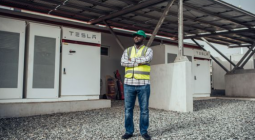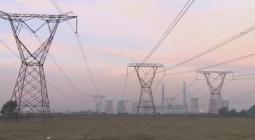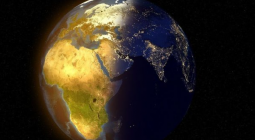Solar keeps the lights on for rural Kenyans during pandemic blackouts.
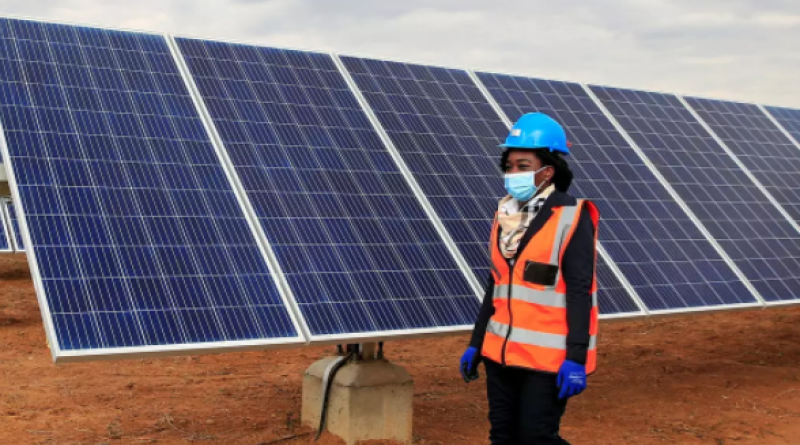
- As the pandemic and extreme weather disrupt electricity supplies for Kenyans, alternative energy sources like solar power are providing sustainable options.
- One in four Kenyans - mostly in rural areas - do not have access to electricity.
- "Sometimes I would even take the tin lamp to use in the kitchen, leaving my children in darkness. But now I do not have to because there is solar lighting in my kitchen," says one farm worker.
When Lucyline Wanja Silas installed a 12-volt solar power unit at her home to help her children study at night, little did she know it would become essential to her and her neighbours in Gakunga village, central Kenya, during the coronavirus pandemic.
Wanja, a 48-year-old farm worker, said she had not made any money since the country's lockdown started in March, but the solar photovoltaic (PV) unit she purchased in January means she no longer needs to buy kerosene for lamplight.
And she can also help others in her area who are without electricity, either because of faults on power lines around the country due to heavy rains since March or because they could not pay their bills after losing their jobs during the pandemic.
"My neighbours who are experiencing blackouts now come to me so that I can charge their phones for them for a fee," she said, adding that they pay 20 to 50 Kenyan shillings ($0.19-0.46).
"There is no money out there. I do not know what I could be using to buy kerosene if I had not installed this solar unit."
With extreme weather and the economic impact of COVID-19 plunging many Kenyans into darkness, alternative energy sources are increasingly important - even for families connected to the grid, said Pamela Mukami Njeru, a community health volunteer in the central Mt. Kenya region.
One in four Kenyans - mostly in rural areas - do not have access to electricity. Those who do face high costs and frequent blackouts due to an unreliable supply.
As cases of the novel coronavirus continue to climb in Kenya, the lack of reliable power can be a matter of life and death, said Njeru, whose work involves taking patients with urgent health problems to and from hospital.
"Without a power source, families facing an emergency are not able to keep their mobile phones charged to call us. This is how having a solar unit which can supply power all day and night can save lives," she told the Thomson Reuters Foundation.
In early May, Kenya suffered a nationwide blackout that lasted about six hours, and the following month, more than 20 counties lost electricity for about 10 hours.
Bernard Ngugi, managing director of the Kenya Power and Lighting Company, told reporters in June that the blackouts were the result of work being done by the company to replace damaged power lines or to upgrade the network to connect new customers.
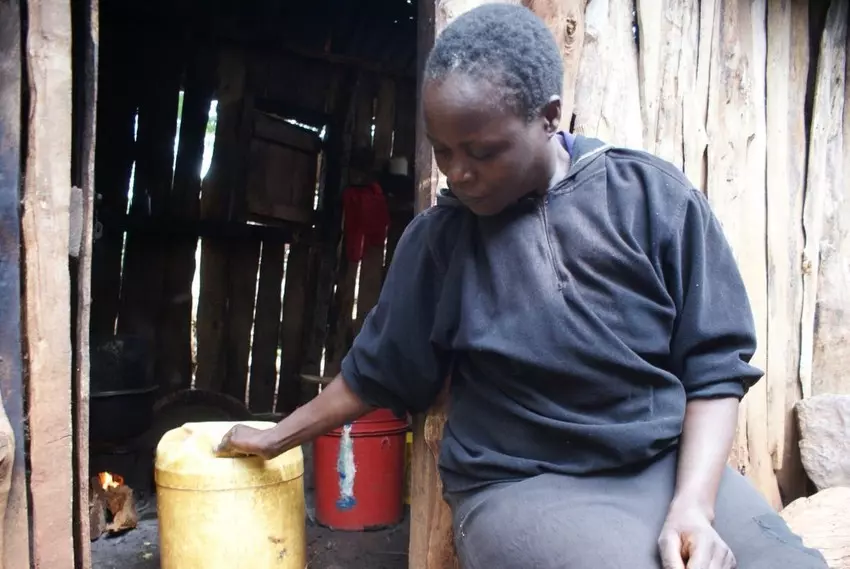
Image: THOMSON REUTERS FOUNDATION/Kagondu Njagi
Slow start
Wanja had hoped to be one of them. She applied for an electricity connection in 2016, but local officials said her application was turned down because she lived too far from the main road.
Worried the kerosene lamps she used for lighting could cause a fire or the toxic fumes would harm her children's health, she decided to put some of her savings into buying a solar system.
Now she has power through the blackouts, she saves the dollar a week she used to spend on kerosene and her children can study safely, she said.
"Sometimes I would even take the tin lamp to use in the kitchen, leaving my children in darkness. But now I do not have to because there is solar lighting in my kitchen," Wanja said.
If more Kenyans switched to solar, the move could also help curb climate change, according to a 2018 report by Stockholm Environment Institute Africa researchers.
Replacing smoky fuels such as kerosene, wood and charcoal with solar energy could help reduce emissions in Kenya by 1.8 megatonnes of carbon dioxide equivalent by 2030, it said.
In 2015, less than 1% of Kenya's electricity came from solar - with most generated from fossil fuels, hydropower and geothermal energy - but the country has the potential to push that up to more than 7% by 2030, the report added.
The researchers linked the slow uptake of solar energy to high investment costs in recent years, noting that upfront costs involved in generating one kilowatt of energy from solar were more than three times as much as those for hydropower.
"We have the solutions and we have the technologies. But the important thing is up-scaling these so that renewable energy generation can become cheaper in Africa," said Mbeo Ogeya, one of the report's authors.

Image: REUTERS/Thomas Mukoya
Life support
Stephen Nzioka, deputy director of renewable energy at Kenya's Ministry of Energy and Petroleum, said the costs of solar energy are falling.
A report published in June by the International Renewable Energy Agency noted that the cost of utility-scale PV solar power dropped by more than 80% between 2010 and last year.
"We are encouraging renewable energy technologies and (their) dissemination, but also combining mini-grids with solar PV systems," said Nzioka, adding that the government had removed import duty on solar products.
Harriet Lamb, CEO of British climate charity Ashden, has called for investors, governments and philanthropic groups to create a $35-million fund to support community-based clean-energy businesses during the COVID-19 outbreak, as customers struggle to pay.
"Off-grid solar offers a lifeline for around 470 million people, keeping lights on and equipment working in health facilities, small businesses and households," she said in a statement earlier this month.
"But some clean energy businesses are vulnerable to collapse without support to see them through the pandemic."
Wanja said the weekly payments she makes on her solar unit work out at 55 Kenyan shillings a day.
Yet, while the government is now easing the coronavirus lockdown, she still has no work - so even that small but essential cost is proving too much.
"Much of my income comes from doing menial jobs, but now there are none because of COVID-19. I cannot afford to pay the daily fee. We need help," she said.
WORLD ECONOMIC FORUM

